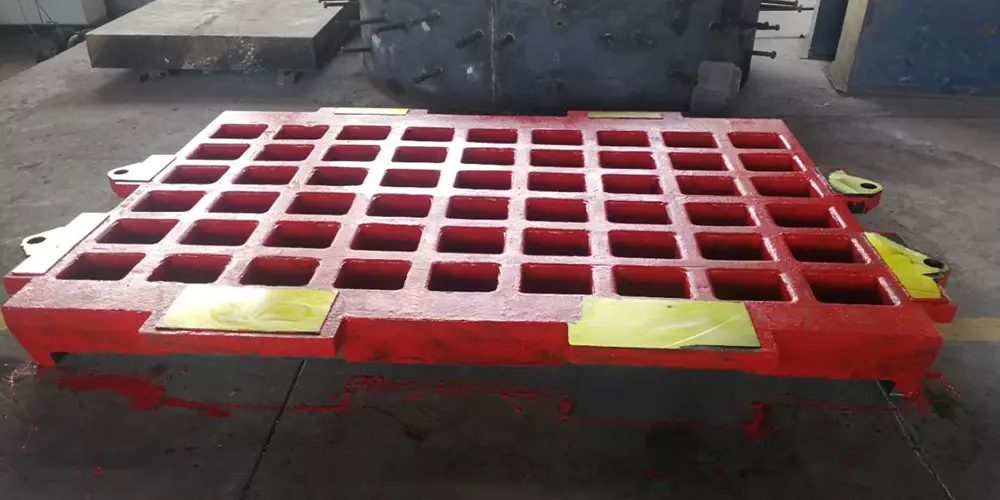A scrap metal shredder, also sometimes referred to as a metal scrap shredder, is a machine used for reducing the size of scrap metal. Scrap metal shredders come in many different variations and sizes.
Scrap metal shredders can be equipped with different types of cutting systems: horizontal shaft, vertical shaft, single-shaft, two-shaft, three-shaft and four-shaft cutting systems. These shredder designs can be high speed, medium speed and sometimes slow-speed systems, they always include hammermills of a vertical and horizontal shaft design, and can also include in contrast to hammer mills slow speed technology which are also used to process or shred metal and plastic and other waste materials encountered in the scrap metal industry.
Scrap Metal Shredder Wear Parts Include
Hammers: The most-frequently replaced wear part is the bell-shaped hammer. Hammers impart the enormous kinetic energy of a shredder’s spinning rotor onto the metal being shredded. Hammers weigh nearly one-half ton new and number about a dozen on the rotor. The rotor with hammers and other wear parts collectively weighs as much as 60 tons. A motor as large as 10,000 hp is needed to attain an operating speed of about 500 rpm. In general, hammers need to be replaced when they have worn down to less than half of their initial weight. If only one hammer needs to be replaced, operators typically replace the opposite hammer, too, to keep the rotor in balance. On average, hammers are replaced once a day.
Bottom Grates: The bottom grate ensures that shredded metal does not leave the shredding zone (hammermill) until shredded metal pieces are reduced to the desired size. The characteristics of the bottom grate’s openings are determined by shredded-metal specifications and operating parameters. The bottom grate sustains substantial abrasion and impacts from the rapidly moving metal inside the hammermill. Depending on shredder size, grates need to be replaced after as much as 70,000 to 100,000 tons of material has passed through the shredder. Bottom grates are often replaced at the same time as anvils and breaker bars.
Liners (including side liners and main liners): Liners internally protect the shredder from damage by the metal being shredded in the hammermill. Liners sustain substantial abrasion and impacts from the rapidly moving metal inside the hammermill. Depending on shredder size and material being shredded, liners may need replacing after 100,000-200,000 tons of material have passed through the shredder.
Caps (rotor and end discs): Rotor and end disc caps protect the rotor from damage by the metal being shredded in the hammermill. Depending on shredder size, caps can weight hundreds of pounds. Caps are replaced after about 10-15 hammer replacements, or about every 2-3 weeks of operations.
Breaker Bars / Anvils: Breaker bars provide internal reinforcement against the impact force of hammers on metal being shredded. Anvils provide an internal surface where feedstock material is introduced into the hammermill and initially impacted by the hammers. Depending on shredder size, these need to be replaced after an average of 70,000 tons of material have passed through the shredder. Breaker bars are often replaced at the same time as anvils and grates.
Roof Plates: Roof plates sustain substantial abrasion and impacts from metal being shredded. Depending on shredder size, these need to be replaced after 150,000-200,000 tons of material have passed through a shredder.
Pin Protectors: Pin protectors protect the long pins (as much as 3,000 pounds) that secure the hammers in place. Depending on the shredder size, pin protectors can weigh hundreds of pounds and are typically replaced after 5-10 hammer changes, or about every 1-2 weeks of operation.
Reject Doors: Reject doors allow removal of unshreddable material and sustain substantial abrasion and impacts from metal being shredded. Depending on shredder size, these need to be replaced after as much as 300,000 tons of material have passed through a shredder.
Front Walls: Front walls sustain substantial abrasion and impacts from metal being shredded. Depending on shredder size, these need to be replaced after 150,000-200,000 tons of material have passed through a shredder.







